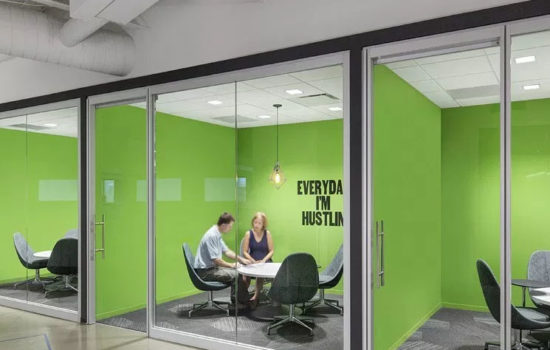HyperConvergence (Hyper-converged infrastructure), as the name suggests, is a combination of key IT services including Networking, Storage, Virtualization, and of course Computing. Traditionally, one needed at least four separate units and then a platform to ensure these four work in tandem. What if you are told all the four can be combined into one and you need no expert to manage all that. Sounds amazing! And it really is. Hyperconvergence certainly is the future where more efficiency is produced out of small and compact devices. It is available right now with trustworthy brands like Cisco in the form of Cisco Hyperflex.
Benefits of Hyperconvergence
Easy to set up
Since the technology of Hyperconvergence unifies multiple components, it has all those components packaged in a single Infrastructure, which can be managed by a single window. Now, it is evident that you just need a few things to plug in or set up instead of doing it all four to five times. The new generation Hyperconvergence solution from Cisco, the Hyperflex also includes networking automation besides computing and storage automation. Within minutes, you can set up and get started.
Easy administration
Managing multiple machines not only need multiple installation phases but ownership also remains with multiple hands, which can have its own challenges. This also gets all the processes like troubleshooting, upgrading, or sanitizing multiplied by the number of devices. Imagine a small fault of broken cable could put the entire system down. Not anymore. The Hyperconvergence technology, since is a single infrastructure, needs little attentional and virtually no administration. Cisco Hyperflex, for example, is best known for its features like traffic segmentation, QoS (Quality of Service) and multicast policies, smart automation, and auto-configuration to IPV4 and IPV 6 leave you with free hands.
Optimal Performance
Built on top of the single platform, the technology ensures optimum use of unique file structure to optimize the performance. Traditionally, one needed to monitor all the levels of devices and make changes accordingly for optimum output. Cisco, for example, uses generation 5 Cisco HyperFlex HX Data Platform which strips and distributes the data across the cluster, making all resource work to yield optimal I/O performance.
Reduced TCO
When all the operations are being performed in an efficient and machine handled way, they are supposed to provide the best possible output. With that, of course, the TCO (Total Cost of Ownership) comes down dramatically while you achieve better flexibility and more control over the system.
No experts required
Experts are needed to manage setup which is complex and throws lot many unknown issues. When you switch to Hyperconvergence, you get a simple interface. A few clicks and you are all set to sail. Now when everything is that simple, would you need an expert for round the clock administration? Not at all. You just need to get it set up once from a certified vendor like Proactive and then you can manage it all easily. You do not need experts, even generalists can do it all for you.
The reason, why you are recommended to get it set up by a certified vendor, is that you can always consult the vendor over the phone and can get any issue resolved.
Scalable and adaptable
Generally the SMBs fear that any technology upgrade will require a lot of investment both in terms of infrastructure and finances. But the Hyperconvergence is a true exception. It saves space as five devices get replaced by one. And of course, the money you need to maintain five versus one is much less from start to maintenance stage. It basically uses the technology that allows granular scalability which makes it even sweeter.
Scalability of HCI (Hyper-Converged Infrastructure) was one of the reasons why some people called it a failed system. But, in a recent study, Gartner has cleared the air on the scalability of Hyperconvergence along with several other myths. Hyperflex of Cisco provides independent scaling with the help of a variety of Cisco UCS servers as computing-only nodes to achieve the right balance of processing power and storage capacity for your workloads.
Cisco Hyperflex also comes with inbuilt native replication. It allows you to replicate your virtual machines to local or remote sites for backup or disaster recovery.
Integrated third-party storage
The Hyperconvergence technology allows you to connect the third-party enterprise storage directly to your cluster through Fibre Channel and IP network. No additional peripherals and you achieve better flexibility.
Lower maintenance
Systems generally start troubling after they have been set up. Maintenance is a key factor in any system and that is where the vendors look to make money. This pain point can be well rectified with the Hyperconvergence technology. Besides all the aforementioned benefits, the system needs little maintenance and has self-help programs. And if you have got it set up a system like Cisco hyperflex from Proactive, life becomes easier. Quick set up follows with a detailed instructional training to the team that will be operating it. Proactive also ensures that the services are regular and updates and communicated to the customer in a prioritized manner.
Why Proactive
Proactive is a proven industry leader when it comes to cloud computing. Being a service company, we begin by requirement analysis, move on with agile methodologies for design, development, and implementation, and then provide appropriate support to the customers. We are a Cisco Gold tier partner with ISO certification. Currently, we are catering to more than 253 prominent customers and many deals are lined up. Our round the clock support for customers is one of the USPs that set us apart from the competition.





